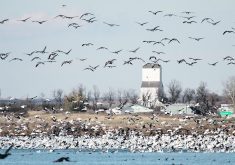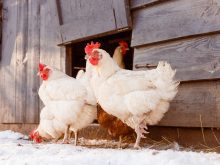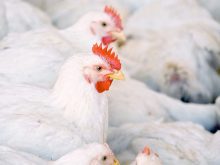The U.S. Food and Drug Administration announced late last month that it will test an additional 155 dairy products to ensure pasteurization eliminates bird flu.
Meanwhile, officials from the U.S. Department of Agriculture are trying to figure out what could be driving its spread.
In April, the FDA said it found trace amounts of the H5N1 strain of highly pathogenic avian influenza (HPAI) in one-fifth of the milk samples it tested, but no live virus in any of the samples.
Read Also

Huge Black Sea flax crop to provide stiff competition
Russia and Kazakhstan harvested huge flax crops and will be providing stiff competition in China and the EU.
The USDA detected HPAI in 132 dairy herds across 12 states as of June 27 with the most cases detected in Michigan, Idaho, Colorado and Texas. In total, 48 states have detected outbreaks in poultry.
Ten poultry farms in Australia have also seen infections caused by multiple strains but not H5N1.
Julie Gauthier, executive director for field operations at the USDA’s Animal and Plant Health Inspection Service (APHIS), said in a webinar June 24 that shared equipment and workers may be causing interstate spread.
“We can’t say this is exactly how the virus made its way onto the premises, but we can take a look at those risky activities that are happening on farm to get an idea of how this might be spreading around,” Gauthier said.
According to a USDA survey of dairy farms in three states, 51 per cent used trucks or trailers shared with other farms to move cattle, while 50 to 85 per cent had frequent visitors who had contact with cattle.
Iowa announced June 25 there will be new testing requirements for dairy cattle before they are transported to state exhibitions or fairs effective July 1.
APHIS has also detected bird flu in domestic cats, foxes, mice, skunks, mountain lions, harbour seals and alpacas since March 1.
Researchers from the University of Pittsburgh’s School of Medicine and Emory University said bird flu in unpasteurized milk can last on metal and rubber components of commercial milking equipment for at least one hour.
The study highlights the need for dairy farm workers to more widely adopt personal protective equipment, according to the study’s authors.
“Our data supports that milking equipment surfaces can stay contaminated for a long time, increasing the potential spread from a sick animal to a person,” said lead author Valerie Le Sage.
“These findings underscore the importance of face shields, masks and eye protection, and enhanced sanitization of equipment between cows to reduce the risk to workers and to minimize the spread between the animals.”
Finland announced June 25 it will become the first country to vaccinate its citizens against bird flu starting as soon as the first week of July.
Adult workers with exposure to animals will receive the two-dose vaccine after the country purchased doses for 10,000 people.
No human cases of the virus have been detected in Finland. Last year, outbreaks in mink and foxes at fur farms in the country forced the culling of 485,000 animals.
To date, no cattle on Canadian dairies have tested positive for the virus.


















